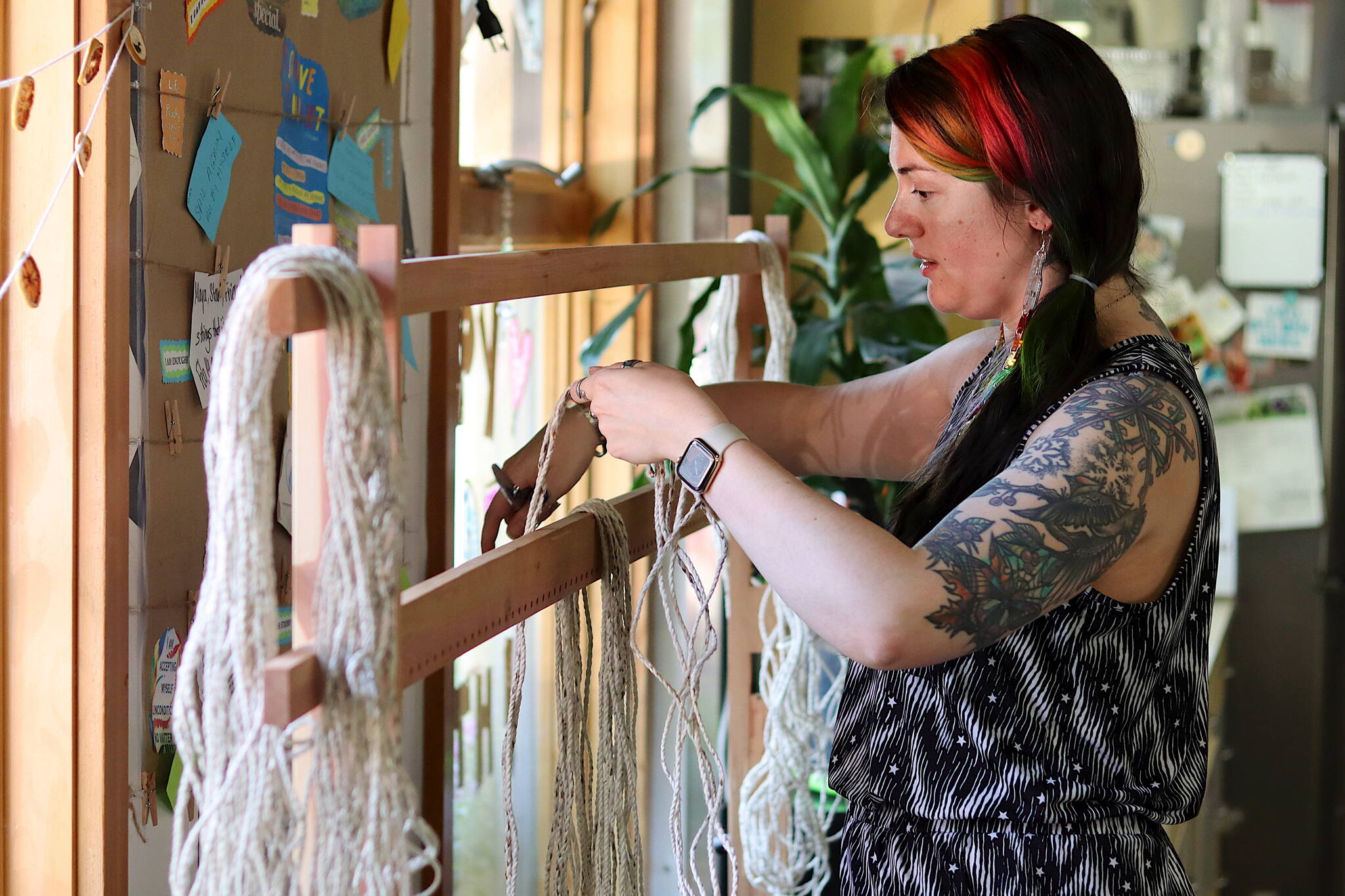It begins by separating an arms-length of yarn into two without using scissors. Instead, each hand twists an end of the strand in opposite directions until it comes apart.
The strands, once separated into piles by color, are then re-twisted together into a stronger braid before being hung on a loom where they will be spun during the next year into two ceremonial Alaska Native robes with distinct heritages and a unifying purpose.
The first threads of the “Weaving Our Pride” project emerged during a four-hour workshop Friday at the Zach Gordon Youth Center, where project leaders began teaching residents of all ages the first steps of transforming bundles of wool yarn into permanent wearable art pieces.
The project is seeking to interweave thousands of years of tribal traditions with new thinking among current-day youths, in the form of two LGBTQ+ Youth Pride Robes participants hope will be ready for Celebration next year. The biennial gathering that typically brings thousands of Alaska Native people to Juneau is among Alaska’s largest cultural events.
“We’re estimating four to six weeks to spin the fiber into what we need to live with,” said Lily Wooshkindein Da.áat Hope, a Tlingit weaver and fiber artist leading a team of mentors planning to spend 15 hours a week working with other participants at the youth center.
“If there was only the mentors weaving for 15 hours a week we could be done with this sooner. But we know that we’re going to spend some of that time mentoring and supporting other people in teaching and learning,” she said.
One robe each will be created using Chilkat and Ravenstail techniques — the latter requiring only one-third to one-half as many rows to be weaved — giving both distinctive appearances, Hope said.
“With a Ravenstail technique, there is space between each row that is being woven,” she said. “So you will see the rainbow color — the vertical bands of rainbow color — coming through the Ravenstail, which means that for every single compact row that we weave on the Chilkat one, we’re only weaving a third of that, or half as many, for the Ravenstail.”
An official description of the project states the robes “will be created together by Native, non-Native, queer, straight, cis-gender, transgender, allies, and all identities youth to sit side by side for one year.”
Several people showing up on Friday afternoon and evening said they had limited weaving experience on smaller projects in classes taught by Hope and were intrigued when they heard about the robes project.
“I knew in the class there’s a lot of math,” said Mary Miller, one of the adult learners, as she kept her hands at proper shoulder-length apart as she untwisted strands of yarn into separate threads. “How much, how long, what color — there’s a ton of math.”
Hanging some of the first separated strand on the loom — or frame, as some participants call the wood rack — was Rae Mills, a mentor who moved from Kake to Juneau 11 years ago. Similar to many of the first-time “students,” she said she’s woven masks and other smaller Alaska Native items.
“I’ve never done anything of this size, so I’m very excited,” she said.
A total of six mentors are working on the project and will share the workload of the project over the next year.
“We’re all taking a day a week,” said Melina Meyer, a mentor who started doing weaving projects in Cordova in 2018 and with Hope during the COVID-19 pandemic after moving to Juneau.
Once the robes are completed — and after Celebration — they will remain at the youth center where people will be able to wear them for “graduations, naming ceremonies, coming out parties, and significant Native and non-Native Pride events,” according to the project’s description.
• Contact Mark Sabbatini at mark.sabbatini@juneauempire.com or (907) 957-2306.

